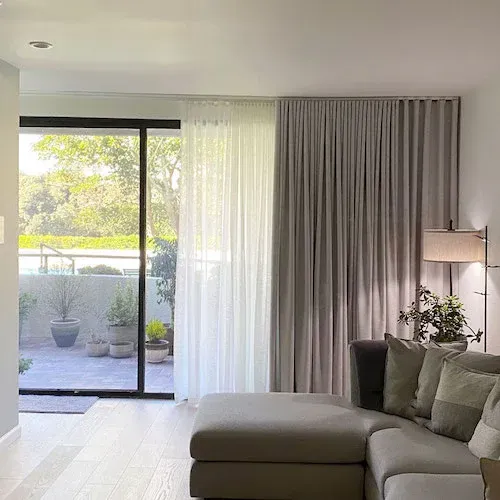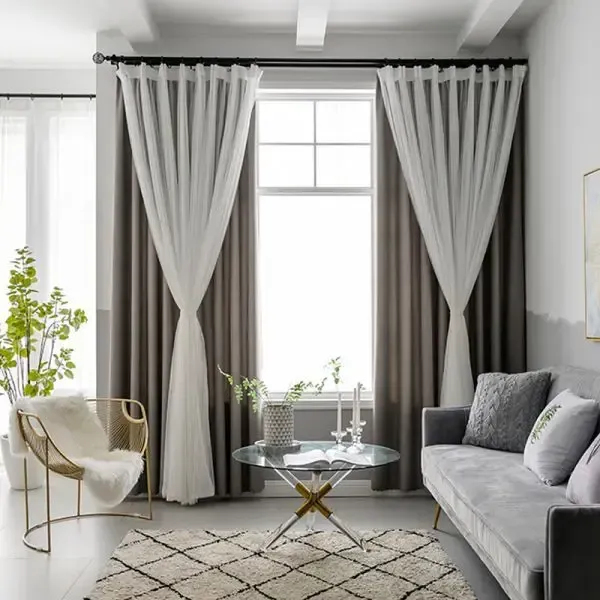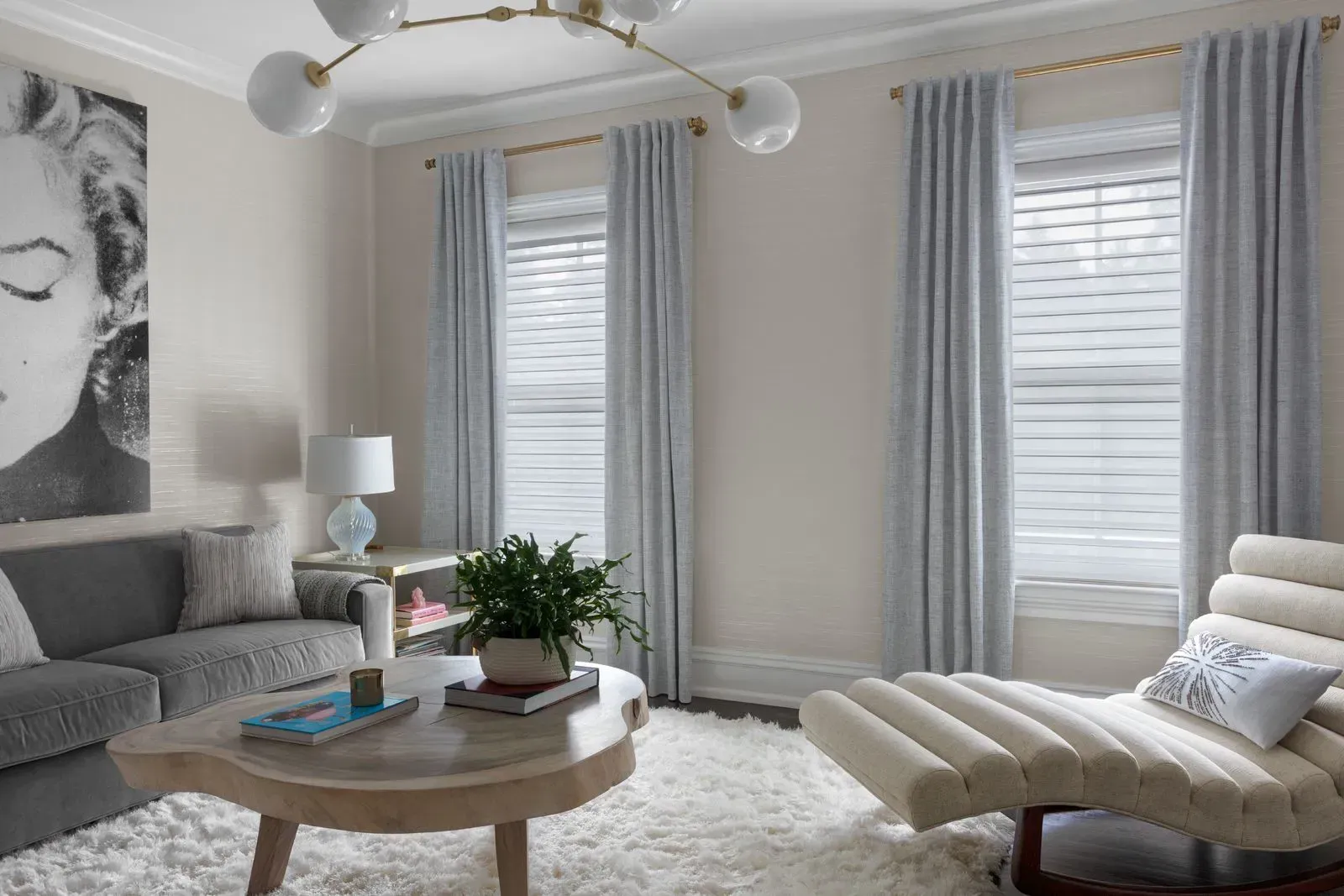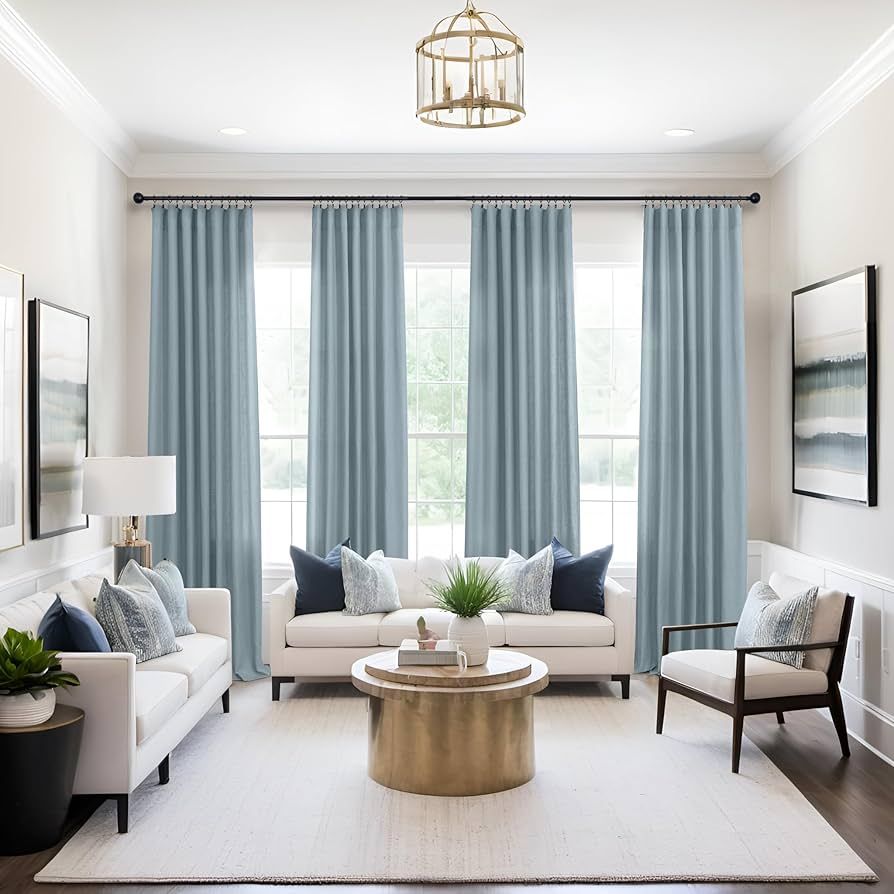What is the Difference Between a Curtain and a Drapery?
TLDR;
The main difference between curtains and draperies is in their fabric weight, functionality, and style. Curtains are made of lighter fabrics, often unlined, and used for a casual look, while draperies are heavier, usually lined, and designed for formal settings with better light control and insulation.
Curtains vs. Draperies

When it comes to window treatments, people often use the terms "curtain" and "drapery" interchangeably. However, they are not the same thing.
Understanding the difference is essential for homeowners, interior designers, and businesses looking to enhance aesthetics and functionality in their spaces.
Below, we break down the key distinctions between curtains and draperies, their practical uses, and how Simply Windows can help you choose the right option for your needs.
What Are Curtains and Draperies?

Curtains Defined
Curtains are fabric panels that are usually lightweight and unlined. They are often used in casual settings and are available in a variety of designs.
- Fabric – Cotton, polyester, linen, or sheer materials
- Length – Typically covers the window or extends a few inches below
- Lining – Often unlined, allowing more light to pass through
- Use – Best for living rooms, kitchens, and casual spaces
- Functionality – Provides privacy and softens natural light
Draperies Defined
Draperies, on the other hand, are made from heavier fabrics and are often lined, making them more structured and elegant. They come in a variety of styles—explore the Different Types of Drapes to find one that fits both your functional needs and design preferences. They are used in formal settings and offer better insulation.
- Fabric – Velvet, silk, brocade, or thick polyester blends
- Length – Floor-length or longer, often designed to "puddle" on the floor
- Lining – Frequently lined for blackout effects and insulation
- Use – Best for dining rooms, bedrooms, and formal living areas
- Functionality – Provides better light control, insulation, and sound absorption
Key Differences Between Curtains and Draperies
| Feature | Curtains | Draperies |
|---|---|---|
| Material | Lighter fabrics (cotton, linen) | Heavier fabrics (velvet, silk) |
| Light Control | Allows natural light, semi-sheer options available | Blocks light completely with lining |
| Formality | Casual, relaxed look | Elegant, dramatic appeal |
| Use Case | Living rooms, kitchens, casual spaces | Formal dining rooms, offices, bedrooms |
| Insulation | Minimal insulation properties | Excellent insulation and sound absorption |
| Maintenance | Easy to wash, machine-friendly | Requires dry cleaning, more upkeep |
When Should You Choose Curtains vs. Draperies?
Choosing between curtains and draperies depends on your space, needs, and aesthetic preference.
Best Window Treatments for Different Rooms
- Living Rooms – Light-filtering curtains for a relaxed atmosphere or layered draperies for a sophisticated look
- Bedrooms – Blackout draperies for better sleep, or double-layered curtains for style and function
- Dining Rooms – Heavy draperies to create a luxurious and formal setting
- Kitchens – Sheer curtains to allow natural light while maintaining privacy
- Offices – Sound-absorbing draperies for focus and professionalism
Style Preferences
- For a casual, airy look → Choose curtains
- For an elegant, luxurious feel → Opt for draperies
- For energy efficiency and insulation → Draperies with thermal lining work best
- For layering options → Combine sheer curtains with draperies
Layering Curtains and Draperies for Style and Function

Many designers recommend combining curtains and draperies for maximum versatility.
How to Layer Window Treatments
- Use double curtain rods – One for sheer curtains, one for draperies
- Mix textures and colors – Pair neutral sheer curtains with bold, rich draperies
- Adjust for lighting needs – Keep sheers closed during the day, draperies drawn at night for privacy
Benefits of Layering
- Enhances insulation – Helps in both summer and winter
- Adds depth to interior design – Creates a dynamic, layered effect
- Improves light control – Adjust layers according to the time of day
Additional Factors to Consider

Environmental Considerations
- Sustainable Fabrics – Opt for organic cotton, linen, or recycled polyester curtains
- Eco-Friendly Draperies – Some brands offer thermal-lined draperies made from sustainable materials
Custom vs. Ready-Made Options
- Custom-Made – Higher quality, perfect fit, tailored to personal taste
- Store-Bought – Affordable, convenient, but may lack uniqueness
Making the Right Choice: A Quick Checklist

✔ Do you need blackout capabilities? → Choose
draperies
✔ Do you prefer a light and breezy feel? → Opt for
curtains
✔ Is energy efficiency a priority? → Go for
lined draperies
✔ Do you want an affordable, easy-to-maintain option? → Stick with
curtains
✔ Do you want a mix of elegance and function? →
Layer curtains and draperies
Elevate Your Space with Simply Windows
At Simply Windows, we specialize in high-quality curtains and draperies tailored to fit any style. Whether you're looking for a modern, casual look or a refined, luxurious aesthetic, we can help you find the perfect window treatment solution.
Need expert advice?
Contact us today to explore our range of curtains, draperies, and custom window treatments!

